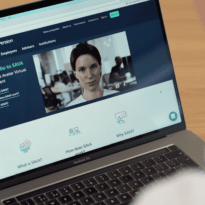The benefits to advisers of integrating different technology solutions are well documented. Linking different systems so they work seamlessly together as one removes the need for re-keying information, reduces errors and risk, streamlining processes to improve efficiency as well as delivering management information that can help drive business growth.
If you are looking to help your business create an integrated technology solution, Kieran McGee, product manager for Extensibility at intelliflo, provides five tips to help with the process.
1. Understand what your business and clients need for your ‘use case’
What problem are you looking to solve by offering your integration? What benefit will it deliver to the business and your clients? Are you looking at combining two systems, or several different software and tools? Are you working with an existing supplier to integrate new software or are you creating your own tailored solution? Does the integration need to be one-way or two way?
When you know what you are looking to achieve from the integration and the benefits that you want to deliver with your use case, it will be easier to understand what data needs to be shared and to work out how you will develop the necessary connections to enhance the user journeys.
2. Consider complexity
Although there are advantages to creating your own bespoke ‘ecosystem’ by combining systems from multiple providers, it is a more complex approach than using a core technology partner with existing, proven third-party integrations. If you decide to pursue a multi-provider approach, make sure you fully map out the connections required between the different systems so that they will perform as you expect at all stages and consider the security requirements of each integration. Settling for partial integrations with additional manual workarounds will reduce productivity and limit the benefits of adopting multiple systems.
3. Get your connections right
To really drive efficiency, advice firms need deeper integrations between systems to allow the necessary data sharing and straight-through processing. Although APIs have simplified the process immensely, full integration still requires collaboration from all parties to work effectively. You might need multiple connection points between two systems to make sure you are getting all the data you need in and out.
If you’re relying on a provider to create the integrations, be vocal about what data points you need to be shared across systems and where connections aren’t working as you want.
4. Ensure data consistency
However well you integrate your systems, they will only talk to each other if data is received in the expected format. For instance, client reference numbers need to match exactly when sharing data between your back-office system and platform or investment manager. Putting procedures in place to ensure that data is entered correctly and consistently from the start is crucial to ensuring that integrations are successful.
5. Test the integration
Take time to test the overall solution before final implementation, and whenever updates are made, to confirm that it meets the identified business and client need identified in your initial use case. Fine-tune as necessary to make sure there is the correct data exchange and the functionality works as expected across all required systems and devices. Include collaborators on the journey to get their input and approval before you make the integration available to all users.
Data from the intelliflo eAdviser Index proves that advice firms which make best use of technology are able to provide a high-quality service to more clients, resulting in increased revenue per adviser. Properly integrating the systems and tools you use is key to driving that success.


































